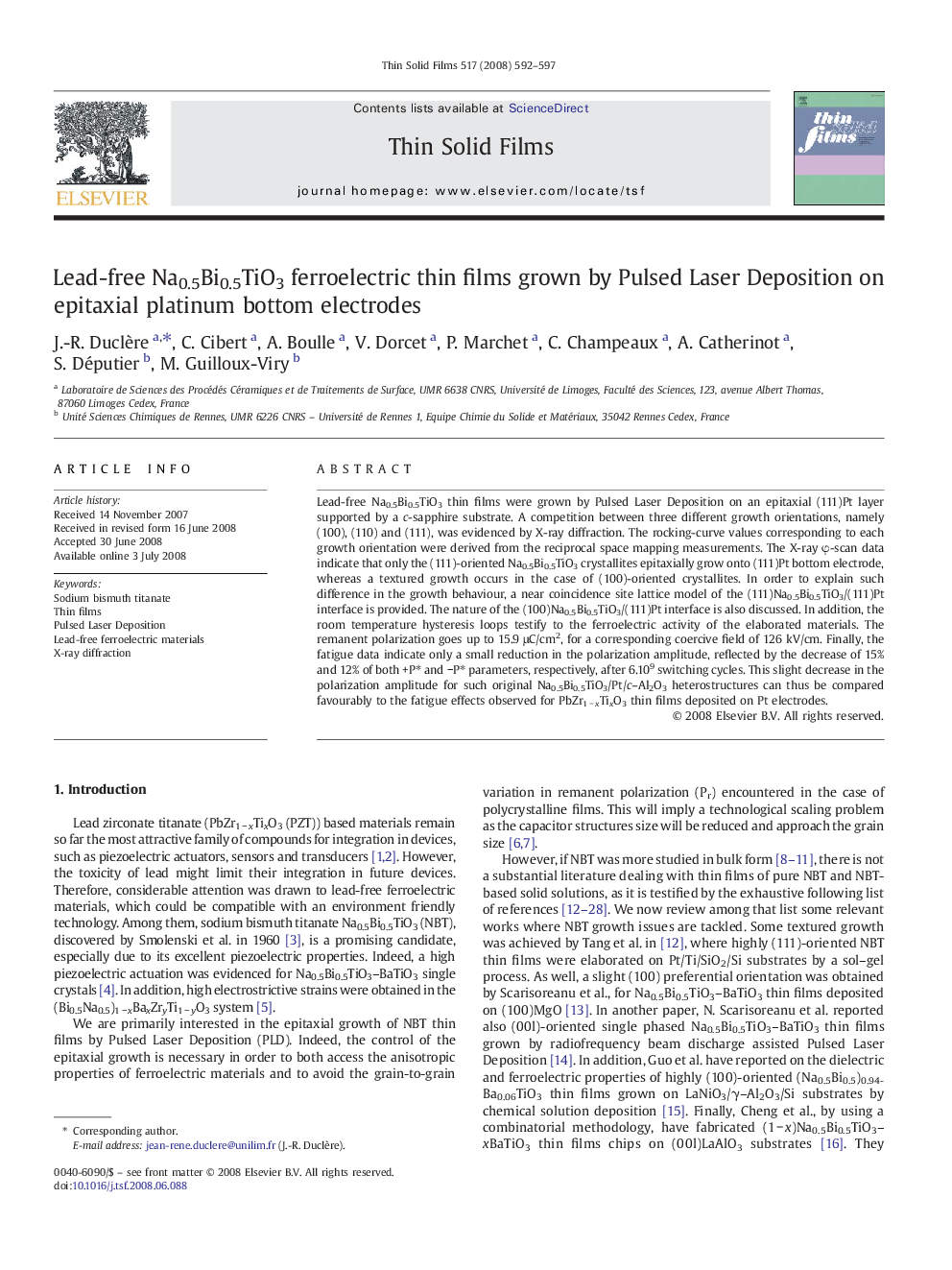| Article ID | Journal | Published Year | Pages | File Type |
|---|---|---|---|---|
| 1670120 | Thin Solid Films | 2008 | 6 Pages |
Abstract
Lead-free Na0.5Bi0.5TiO3 thin films were grown by Pulsed Laser Deposition on an epitaxial (111)Pt layer supported by a c-sapphire substrate. A competition between three different growth orientations, namely (100), (110) and (111), was evidenced by X-ray diffraction. The rocking-curve values corresponding to each growth orientation were derived from the reciprocal space mapping measurements. The X-ray Ï-scan data indicate that only the (111)-oriented Na0.5Bi0.5TiO3 crystallites epitaxially grow onto (111)Pt bottom electrode, whereas a textured growth occurs in the case of (100)-oriented crystallites. In order to explain such difference in the growth behaviour, a near coincidence site lattice model of the (111)Na0.5Bi0.5TiO3/(111)Pt interface is provided. The nature of the (100)Na0.5Bi0.5TiO3/(111)Pt interface is also discussed. In addition, the room temperature hysteresis loops testify to the ferroelectric activity of the elaborated materials. The remanent polarization goes up to 15.9 μC/cm2, for a corresponding coercive field of 126 kV/cm. Finally, the fatigue data indicate only a small reduction in the polarization amplitude, reflected by the decrease of 15% and 12% of both +Pâ and âPâ parameters, respectively, after 6.109 switching cycles. This slight decrease in the polarization amplitude for such original Na0.5Bi0.5TiO3/Pt/c-Al2O3 heterostructures can thus be compared favourably to the fatigue effects observed for PbZr1 â xTixO3 thin films deposited on Pt electrodes.
Related Topics
Physical Sciences and Engineering
Materials Science
Nanotechnology
Authors
J.-R. Duclère, C. Cibert, A. Boulle, V. Dorcet, P. Marchet, C. Champeaux, A. Catherinot, S. Députier, M. Guilloux-Viry,
